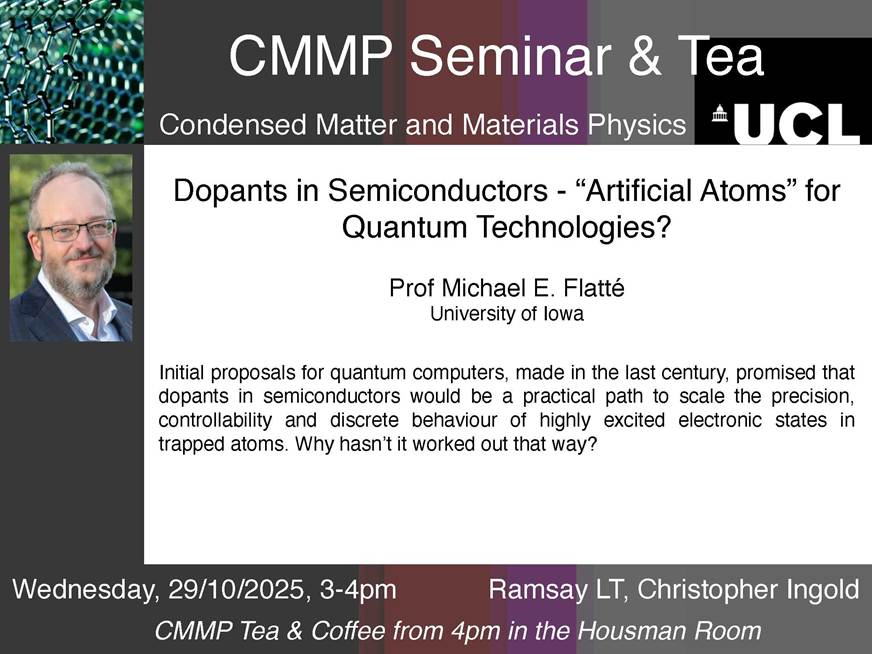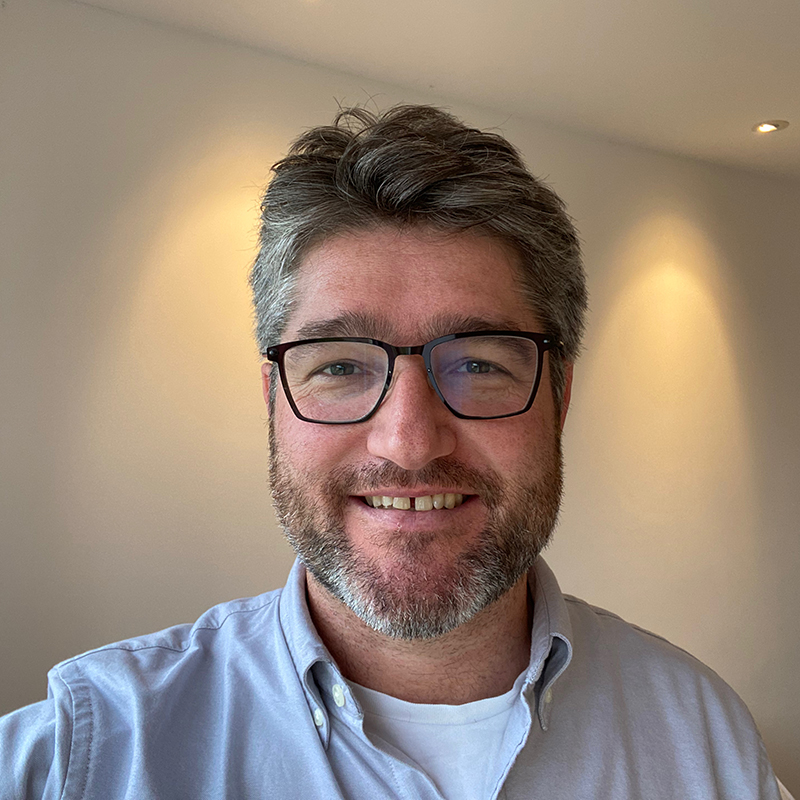CMMP Seminar by Prof. Michael Flatté (U. Iowa / TU Eindhoven)
We were delighted to host Prof. Michael E. Flatté from the University of Iowa for his recent visit to UCL.
Michael is a long-standing collaborator and regular visitor to our group. This visit combined two highlights: continuing our collaborative work with his PhD student, Niels van Venrooij, and delivering an invited seminar to the Condensed Matter and Materials Physics (CMMP) group.
Niels is undertaking a research visit with us, working on projects that bridge experiment and theory. One of these, now nearing completion, examines interference effects in photoemission from silicon nanostructures. He is also developing new models to describe correlations in dilute dopant networks—an important step toward understanding the collective behaviour of dopants in semiconductors.

During his visit, Michael also delivered a thought-provoking seminar to the CMMP group of the Department of Physics and Astronomy entitled “Dopants in Semiconductors – ‘Artificial Atoms’ for Quantum Technologies?”
In his talk, he explored why semiconductor-based quantum computers have yet to achieve the scalability originally envisioned. While dopants in semiconductors were once seen as ideal building blocks for quantum technologies, offering discrete energy states and the promise of scalability, progress has been slower than anticipated.
He explained that the number of qubits achieved in semiconductor systems remains an order of magnitude or more below that realised in superconducting or trapped-ion platforms. A major challenge, he noted, lies in noise introduced by control gates and electrodes, which can be a severe impediment to qubit coherence times. Moreover, whereas classical CMOS technology is inherently digital, quantum systems are not, and this mismatch poses difficulties: each qubit often requires individual tuning to achieve uniform performance. Even dopant-based qubits, often described as “identical,” can vary due to differences in their local crystal environment.

Throughout the seminar, Michael illustrated these ideas with striking examples that combined experiment and theory. His talk ranged from nitrogen-vacancy centres in diamond and silicon carbide to dopants in III–V and group-IV semiconductors, including recent collaborative work with our group on acceptor states in silicon. He also suggested that using superconducting gates in semiconductor architectures could offer a path to mitigating electrical noise in future quantum circuits.
As always, Michael’s visit was intellectually stimulating and strengthened our ongoing collaborations in semiconductor quantum devices and spin-based quantum technologies. We eagerly look forward to his next visit.
